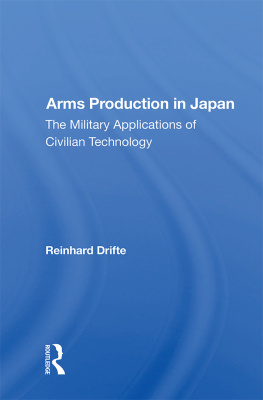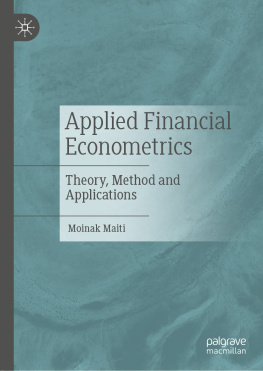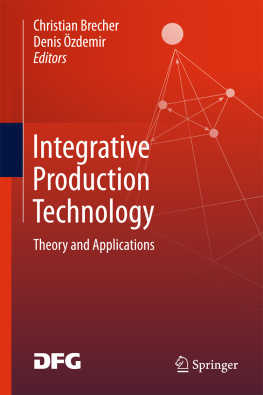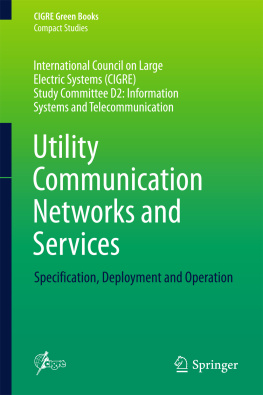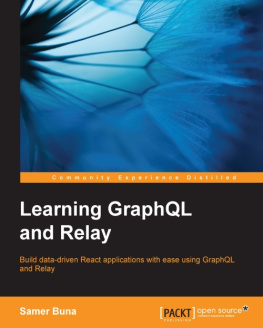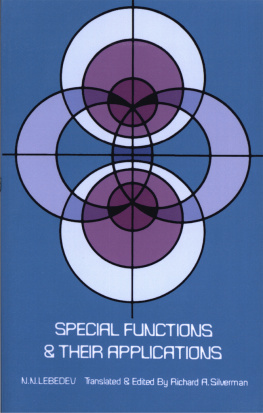To the cricket, rugby and soccer fanatics, and all the other staff members, in the department.
First published 1998 by Ashgate Publishing
Reissued 2018 by Routledge
2 Park Square, Milton Park, Abingdon, Oxon 0X14 4RN
711 Third Avenue, New York, NY 10017, USA
Routledge is an imprint of the Taylor & Francis Group, an informa business
Copyright Erkin I. Bairam 1998
All rights reserved. No part of this book may be reprinted or reproduced or utilised in any form or by any electronic, mechanical, or other means, now known or hereafter invented, including photocopying and recording, or in any information storage or retrieval system, without permission in writing from the publishers.
Notice:
Product or corporate names may be trademarks or registered trademarks, and are used only for identification and explanation without intent to infringe.
Publishers Note
The publisher has gone to great lengths to ensure the quality of this reprint but points out that some imperfections in the original copies may be apparent.
Disclaimer
The publisher has made every effort to trace copyright holders and welcomes correspondence from those they have been unable to contact.
A Library of Congress record exists under LC control number: 98071456
ISBN 13: 978-1-138-71629-2 (hbk)
ISBN 13: 978-1-315-19705-0 (ebk)
Erkin I. Bairam, Department of Economics, University of Otago, PO Box 56, Dunedin, New Zealand; ebairam@commerce.otago.ac.nz
Harry Bloch, Department of Economics, Curtin University of Technology, GPO Box U1987, Perth, Western Australia 6845; BlochH@cbs.curtin.edu.au
Chris Doucouliagos, School of Economics, Deakin University, 221 Burwood Highway, Burwood, Victoria 3125, Australia; douc@deakin.edu.au
Murat Gen, Department of Economics, University of Otago, PO Box 56, Dunedin, New Zealand; mgenc@commerce.otago.ac.nz
Phillip Hone, School of Economics, Deakin University, 221 Burwood Highway, Burwood, Victoria 3125, Australia; hone@deakin.edu.au
Emel Kahya, School of Business, Rutgers University, Camden, New Jersey, USA; kahya@crab.rutgers.edu
Michael Olive, Department of Economics, Curtin University of Technology, GPO Box U1987, Perth, Western Australia 6845.
Roger Willen, School of Accountancy, Faculty of Business, Queensland University of Technology, GPO Box 2434, Brisbane 4001, Australia; r.willett@qut.edu.au
Erkin I. Bairam
I. Introduction
In the production literature, it is well known that functions used in applied research are, without a priori tests, assumed to be not only homogeneous but linear homogeneous. Unfortunately, it is not generally known that the homogeneity (and hence, the constant scale elasticity) assumption is not appropriate for some aspects of the production theory.
Ringstad (1974) and Bairam (1991b) have shown that much of the theoretical work is based on production functions with a scale elasticity which decreases with increase in output. This contrasts with many popular production functions used in applied studies which assume the same returns to scale at all levels of output.
The following quotation eloquently summarises the main limitations of the homogeneity assumptions:
Production functions most commonly used in empirical research are homogeneous i.e., they have constant scale elasticity [see ], like the Cobb-Douglas and CES production functions. On the other hand much of the theoretical work is based on production functions with a scale elasticity which is decreasing when at least one factor is increasing and none is decreasing. The difference between scale elasticities can be illustrated many ways. In Figure 1 we illustrate how the average cost curve may look when we have: i) a homogeneous production function with scale elasticity above one, ii) the same type of production function with a scale elasticity below one, and iii) an inhomogeneous production function with a scale elasticity decreasing from values above one to values below one. (Ringstad (1974, p.88)).
Consequently, as early as 1973, Christensen et al. argued that it is important to develop tests of the theory of production that do not employ homogeneity as part of the maintained hypothesis. More recently Fuss et al. (1978) went even further and emphasised that flexible functional forms, embodying few maintained hypotheses, should be used to test fundamental hypotheses of the production theory. Given this background, it is important to examine such new and not-so-new production functions in some detail and this will be the main objective of this paper.
Consequently, in this chapter new non-homogeneous functions by the present author, as well as, the popular non-homogeneous production functions developed in the late 1960s and early 1970s are examined and discussed. In concludes the chapter.
II. The Neo-Classical Production Function
The conventional production function theory begins with two inputs (labour, L, and capital, K) which are combined to produce a unique maximum quantity of output (Q):
Q=f(L,K)(1)
The function f defines the technical relationship between the two inputs and output. It is assumed to be continuous and, at least, twice differentiable.
The neo-classical production function requires that marginal products of labour (fL) and capital (fK) are positive and decreasing. That is writing (L/L) = fL; (2Q/L2) = fLL and so forth, the production function assumes:
fL>0;fK>0;fLL<00:fKK<0(2)
The neo-classical production function is also assumed to be homogeneous (see, inter alia, Chambers (1988) and Bairam (1991b)). That is to say if labour and capital are increased by some proportion h, then Q may increase in the same proportion, or by some larger or smaller proportion, namely:
f(hL,hK)=h(L,K)=hQ(3)



